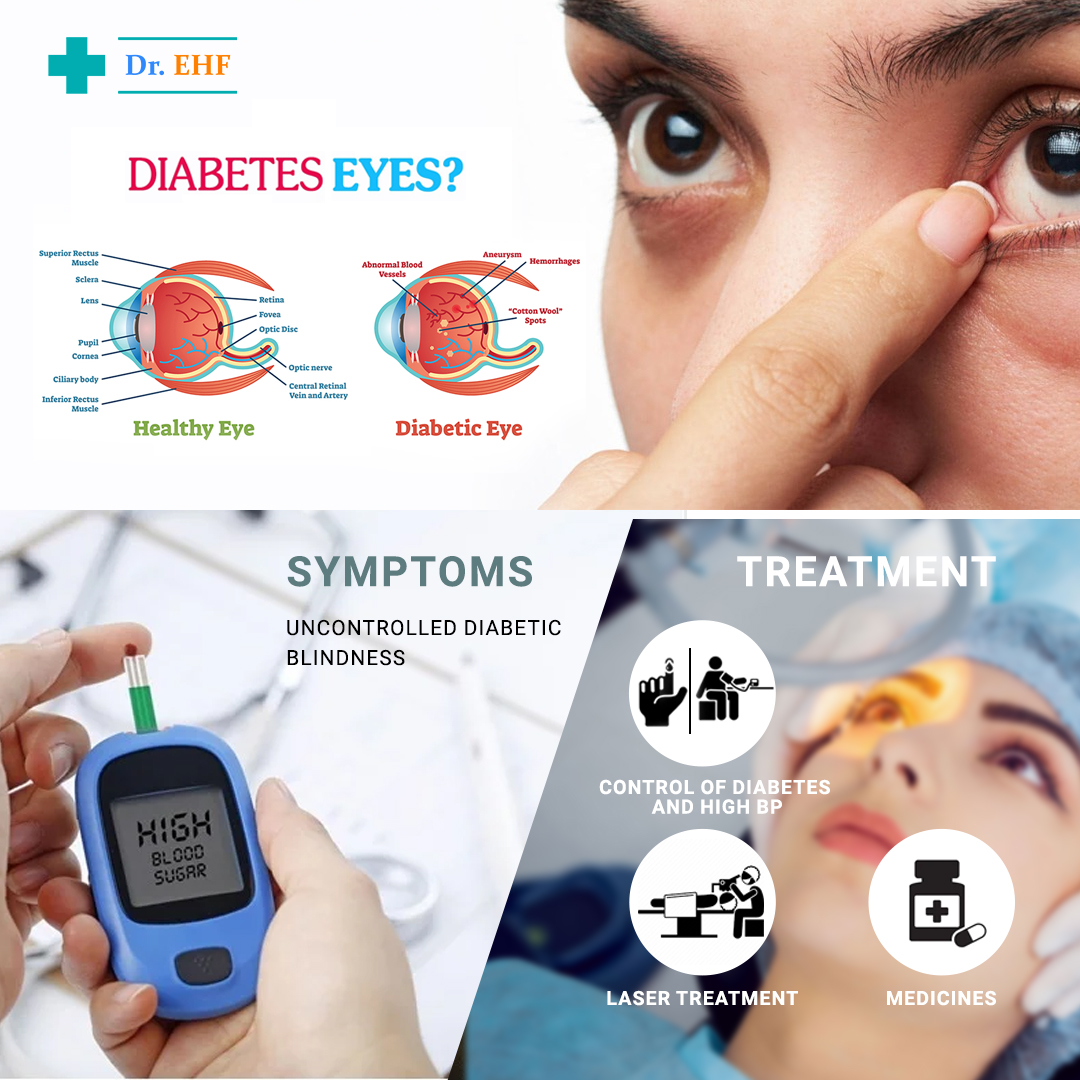In today's scenario around 2 percent of people lose their eyesight due to diabetes, which also increases cataract formation, increases nerve problems & increases swelling of the eye screen where images are formed & also affects blood vessels of the eye. The main cause of blindness is DIBETIC RETINOPATHY(DR), which affects almost 90 percent of diabetic patients.
NATURAL HISTORY OF D R:
In the beginning no changes are noticed in the eye. As D R progresses, red dots appear & other changes become noticeable, like cotton wool spots & flame shaped red stains inside the eye. Initially the patient's eyesight is not affected, but as the disease increases, blood vessels start bursting causing sudden bleeding & blindness. Eventually hard cells starts growing in the eye & can cause permanent blindness. Slowly back of the eye screen gets hardened & hence patients find it difficult to see fine details of vision, colors, ability to recognize faces & finally lead to loss of sight.
ORIGIN & DEVELOPMENT OF D R:
It is difficult to identify the development of this disease, but it is widely believed that increase in blood sugar level is the main culprit, which increases the leakage of blood vessels in the eye. Platelets & other fibrous material is also known to cause blockage of blood vessels in the eye. It has been noticed that white blood cells become more sticky & stick to blood vessels inside the eye. As the blood supply is stopped, new vessels start growing in a vain attempt to restore normal blood supply, but unfortunately, they continue to leak.
RISK FACTORS IN D R:
Hereditary family chain is known to pass this disease from one generation to another & may be due to insulin resistance in such patients.
TREATMENT OF D R:
Presently D R is being treated by medicines as well as by surgery. However newer treatments are also being tried out. In one of the trials diabetic patients who were put on Insulin injections remained free from D R for a prolonged period of time as compared to untreated patients.
Similar results were found in a U K study. Strict blood pressure control also helped in controlling the increase in this disease of Diabetic Retinopathy.
LIGHT PHOTOCOAGULATION:
In this method Laser is used to burn away the damaged or hardened part of the image screen inside the eye, so as to stop further increase in damage to eye cells & restore oxygen supply.
From a public health point of view, screening of diabetic patients is a must & is a very cheap way of reducing further complications, which would have otherwise remain undetected. In this process, examination of the eye screen, where image is formed, should be done by enlarging pupils of the eye, using digital photography which gives much faster results & affected cases can be followed up by using Laser treatment if need be.
NEW TREATMENTS UNDER TRIAL:
New methods of treatment include using long-acting Somatostatin analogues, which are being injected once a month, PKC inhibitors & angiotensin receptor blockers. These are cell mediators which affect various cell functions & is being presently tried out.
CONCLUSIONS:
Since the above studies are continuing & will take some time, what should diabetic patients do to avoid being blinded ?
It's very important that blood sugar levels should be maintained to near normal levels, also blood pressure should be checked & preferably be controlled below 135/85, & also eye checkup should be done every 2 years, if not earlier.
Compiled from various international research journals available at google scholar by D. Mukherjee having 38 years of pharmaceutical (Cardiac, Diabetic, Neurology, Pain & Inflammation products) experience with a Swiss Multinational Company NOVARTIS and edited by Dr Sandeep Ahlawat, MBBS
